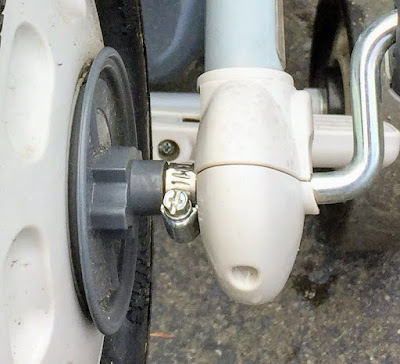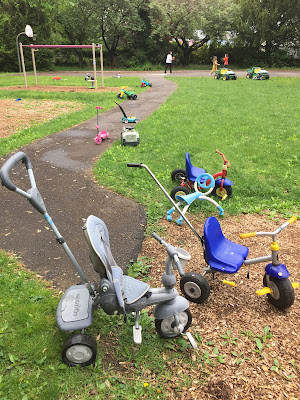This blog has long made the case for Princeton to progressively shift towards containerization of leaves, yardwaste, and brush. The aim would be cleaner streets, better compliance with state and local requirements, and substantial reduction in costs for taxpayers. There are many additional reasons why municipalities elsewhere in the country have adopted containerization over collecting loose material tossed in the street.
A recent trip to the Lawrenceville Ecological Center offered yet another reason to make the shift. The composting site, out on Princeton Pike, is a wonderful facility, with windrows of compost stretching into the distance. They produce two products, one of which is composted leaves, the other twice ground wood chips. Both of these get piled high and are available for residents of Lawrenceville and Princeton at no cost.It sounds great, and is great, but they do have a problem. There's more compost and woodchips than they can get rid of. In the first photo is the big pile of compost that has been sitting there for more than a year. And the Lawrenceville public works director told me that the demand for their double ground woodchips has declined since homeowners have come to prefer the darker look of artificially dyed wood chips.
How would containerization help reduce the excess product, and thereby save Lawrenceville and Princeton significant cost? The limited capacity of a large compost cart would create an incentive for homeowners to utilize some of their leaves in their own yards, by mowing them back into the lawn, leaving them under shrubs as mulch, or piling them in a back corner to return to the soil. It would also reduce the noise of gas-powered leaf blowers, which classically drone on while blowing loose leaves into the streets.
By providing homeowners with large rollcarts, the town would achieve a much-needed compromise between the current massive loose collection of yardwaste and the "leave the leaves" approach many environmentalists promote. Such a change can be phased in, integrated into existing collections of yardwaste bags, and targeted initially for residents on busy streets where piling loose material in the street is not an option. Like many public policy issues, this one has many layers of complexity, and will require receptivity to change, and a recognition of what has worked elsewhere.




